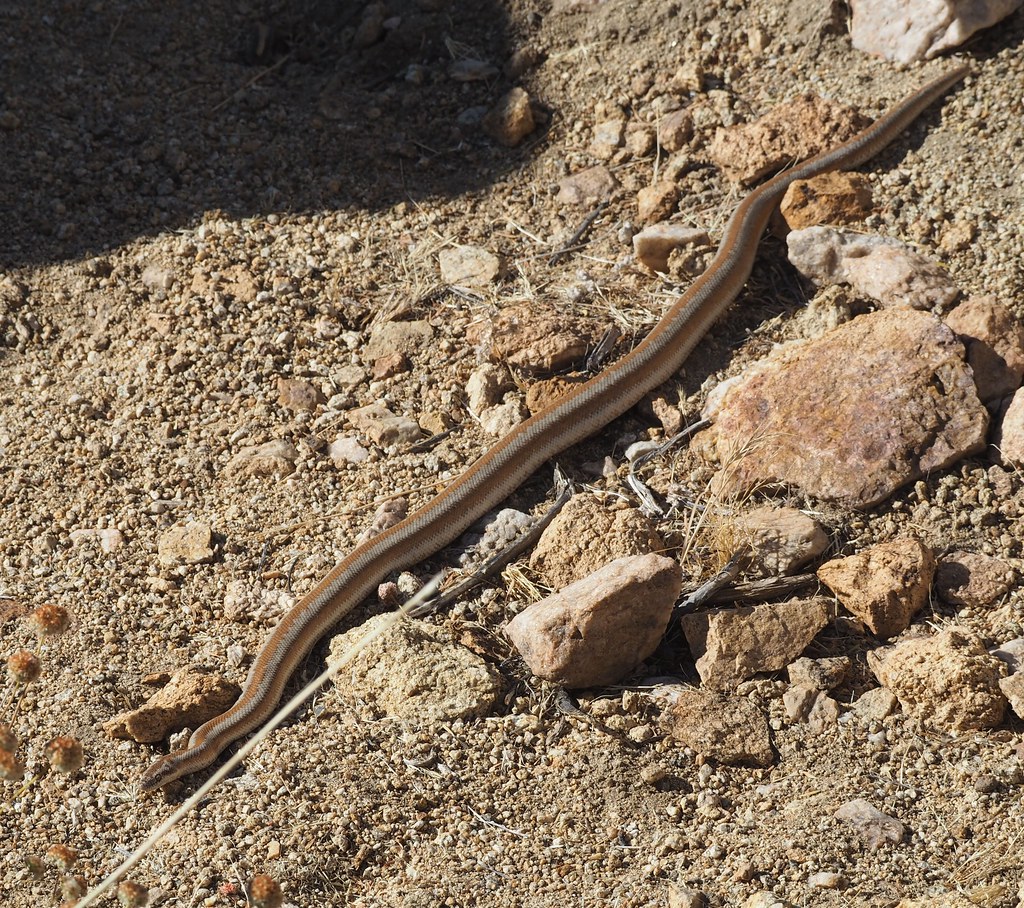When we think of animals that respond to human voices, snakes rarely come to mind. Yet, certain snake species possess remarkable abilities to detect and react to vibrations created by human speech. This fascinating intersection of reptilian sensory biology and human communication reveals much about how different species perceive and interact with their environment. The Arabian sand boa (Eryx jayakari) and several other snake species have demonstrated particular sensitivity to the vibrations produced when humans speak, leading to unique behavioral responses that have captivated researchers and snake enthusiasts alike. This phenomenon opens a window into understanding not only snake biology but also the unexpected ways in which human presence influences the natural world around us.
The Science Behind Vibrational Sensitivity in Snakes

Snakes lack external ears but possess sophisticated mechanisms for detecting vibrations in their environment. Unlike mammals, they rely on their jawbones and internal ear structures to sense vibrations traveling through substrates like sand, soil, or rock. The snake’s lower jaw makes contact with the ground, transmitting vibrations to the inner ear via a bone called the quadrate bone. This system allows snakes to detect prey movement, potential predators, and environmental changes without conventional hearing. Research has shown that some species can detect vibrations as subtle as those created by a small mouse walking several meters away, demonstrating the remarkable sensitivity of their vibrational detection system. This specialized sensory adaptation has evolved over millions of years, giving snakes a unique perspective on the world around them that differs dramatically from our own audio-centric experience.
The Arabian Sand Boa: A Master of Vibrational Detection

The Arabian sand boa (Eryx jayakari) has gained particular attention for its heightened sensitivity to vibrations produced by human speech. Native to arid regions of the Middle East, this small, non-venomous snake has evolved specialized adaptations for life beneath the desert sands. Researchers have observed that these snakes will often emerge from their subterranean hideouts when humans speak nearby, a behavior that local people have known for generations. The frequency range of human speech—typically between 85 and 255 Hz—creates vibrations that travel efficiently through sand, making them particularly detectable to these specialized reptiles. Laboratory studies have confirmed that these snakes respond more consistently to the vibrations of human conversation than to many other environmental stimuli. This remarkable adaptation likely evolved as a hunting mechanism, as the vibrations created by potential prey animals fall within similar frequency ranges.
How Human Speech Creates Detectable Vibrations

Human speech generates acoustic waves that travel not only through air but also through solid and semi-solid mediums like soil and sand. When we speak, our vocal cords create pressure waves that cause minute vibrations in surrounding surfaces, including the ground beneath our feet. These vibrations vary in intensity and frequency depending on the pitch, volume, and characteristics of the speaker’s voice. Lower frequencies, particularly those in male vocal ranges, tend to create stronger ground vibrations that travel farther through substrates. Scientific measurements have shown that even normal conversation can create ground vibrations detectable up to several meters away by specialized sensory systems like those possessed by snakes. The way these vibrations propagate through different materials explains why snakes may react differently to human speech depending on the terrain—with responses being strongest in loose, sandy environments that efficiently transmit certain frequency ranges.
The Role of the Snake’s Ventral Scales

A snake’s ventral scales—the large, specialized scales on its underside—play a crucial role in detecting speech-generated vibrations. These scales make direct contact with the ground, creating a sensitive interface between the environment and the snake’s body. Each ventral scale contains numerous microscopic sensory structures that can detect subtle changes in pressure and vibration. These sensory cells transmit information to the snake’s nervous system, allowing it to build a detailed picture of vibrations in its environment. Research using electron microscopy has revealed that desert-dwelling species like the Arabian sand boa possess a higher density of these sensory structures compared to arboreal or aquatic snake species. The arrangement of these scales and their associated nerve endings allows snakes to not only detect vibrations but also determine their direction and distance, creating a form of “vibrational vision” that helps them navigate their world.
Behavioral Responses to Human Speech Vibrations

When snakes detect vibrations from human speech, their responses can vary dramatically depending on species, context, and individual experience. Many burrowing species will initially freeze upon detecting unfamiliar vibrations, then either emerge from their hiding places to investigate or retreat deeper for safety. The Arabian sand boa typically exhibits an investigative response, often raising its head above the sand while keeping its body concealed—a behavior that researchers believe helps it assess potential threats or prey opportunities. Other species, such as the North American gophersnake, may respond by producing counter-vibrations, pressing their lower jaws against the ground to better analyze the incoming signals. Some captive specimens even appear to recognize the specific vibrational patterns of their caretakers’ voices, responding differently to familiar humans versus strangers. These varied responses highlight the sophisticated nature of snake sensory processing and decision-making based on vibrational cues.
The Ecological Advantage of Speech Detection

The ability to detect human speech vibrations likely evolved as a byproduct of adaptations for hunting and survival rather than specifically for human interaction. In their natural environment, snakes that can detect subtle ground vibrations gain significant advantages in locating prey, avoiding predators, and finding mates. The frequency range of many small desert mammals—primary prey for species like the sand boa—overlaps considerably with human speech frequencies. This sensory capability allows snakes to detect potential meals moving underground or on the surface from considerable distances. Additionally, being able to sense large animals approaching through ground vibrations provides crucial early warning of potential threats. In ecosystems where humans have been present for thousands of years, some snake populations may have developed enhanced sensitivity to human-generated vibrations as an additional survival mechanism, allowing them to avoid encounters with a species that often poses a threat to them.
Regional Variations in Vibrational Responses

Interestingly, snakes’ responses to human speech vibrations show notable regional variations, suggesting potential evolutionary adaptations to local human populations. Studies comparing Arabian sand boas from areas with long histories of human habitation to those from more remote regions show measurable differences in their responsiveness to speech vibrations. Snakes from areas with greater human activity often display more nuanced responses, sometimes distinguishing between vibrations caused by walking versus speaking. Similar patterns have been observed in other species, such as certain rattlesnake populations in North America that show heightened sensitivity to vibrations in frequencies matching those of human activities common in their territories. These regional differences point to the possibility that snake populations coevolve with local human activities over time, developing specialized sensory adaptations to the predominant human-generated vibrations in their environment. Such adaptations demonstrate the remarkable plasticity of snake sensory systems across relatively short evolutionary timescales.
Linguistic Factors: Do Different Languages Elicit Different Responses?

Preliminary research suggests that different human languages may elicit varying responses from vibration-sensitive snakes due to their distinctive acoustic properties. Languages with more low-frequency sounds, stronger stress patterns, or particular rhythmic characteristics create different vibrational signatures in the substrate. For example, research with Arabian sand boas has indicated potentially stronger responses to Arabic and Hebrew—languages with strong guttural sounds that create distinctive ground vibrations—compared to languages with different phonological features. The tonal qualities of languages like Mandarin Chinese, with their varying pitch patterns, generate uniquely identifiable vibrational patterns that may be processed differently by a snake’s sensory system. Although this field of study remains in its infancy, the potential relationship between linguistic features and snake responses offers fascinating insights into how human cultural diversity might influence wildlife behavior in unexpected ways. More controlled studies are needed to fully understand these potential correlations and eliminate confounding variables.
Applications in Snake Conservation

Understanding how snakes respond to human speech vibrations has practical applications in conservation efforts for vulnerable species. Researchers are exploring how this knowledge might be used to develop non-invasive survey methods to detect the presence of rare or endangered snake species in difficult-to-access habitats. By using controlled vibrations that mimic human speech patterns, conservationists can potentially elicit responses from hidden snakes without disturbing their habitat or causing stress through physical handling. This approach has shown promise in preliminary studies with several burrowing species of conservation concern. Additionally, understanding these sensory mechanisms helps in designing protected areas that minimize disruptive vibrations from human activities. Conservation programs are also incorporating this knowledge into public education efforts, helping people understand how their presence impacts snake behavior and ecology. These applications demonstrate how fundamental research into snake sensory biology can translate into practical tools for protecting these often misunderstood reptiles.
Myths and Misconceptions About Snake Responses to Speech

Despite scientific understanding of vibrational sensitivity in snakes, numerous myths and misconceptions persist about how and why snakes respond to human speech. One common misconception is that snakes are “listening” to the words being spoken, when in reality they’re detecting the vibrations created by speaking rather than processing the acoustic content of speech. Another widespread myth suggests that snakes can be “charmed” by certain spoken words or tones, a misinterpretation of their natural response to vibrations and movement. Some cultures maintain traditional beliefs that speaking certain phrases can repel or attract snakes, beliefs that typically lack scientific foundation but may coincidentally align with behaviors that create distinctive vibrational patterns. Perhaps most persistently, many people believe snakes are responding to the sound of human voices traveling through air, not understanding the fundamental difference between airborne sound detection and substrate vibration sensitivity. Clarifying these misconceptions is important for fostering accurate understanding of snake biology and behavior.
Technological Applications Inspired by Snake Vibrational Sensitivity

The remarkable vibrational sensitivity of snakes has inspired numerous technological innovations in fields ranging from seismology to security systems. Engineers have developed ground-based sensor arrays that mimic the distributed sensing capabilities of snake ventral scales, creating highly sensitive systems for detecting subtle ground movements. These bio-inspired technologies have applications in earthquake early warning systems, border security, and monitoring wildlife in remote locations. Medical researchers have adapted principles from snake vibrational detection to create diagnostic devices that can detect subtle vibrations in human tissues, potentially identifying abnormalities that might indicate disease. In robotics, the principles of snake vibrational sensing have influenced the development of search-and-rescue robots designed to detect survivors trapped under rubble by sensing their movements and speech vibrations. These technological applications demonstrate how understanding natural adaptations can lead to innovative human technologies, creating a bridge between biological research and practical engineering solutions to complex problems.
Interacting Safely with Vibration-Sensitive Snakes

For people living in regions with vibration-sensitive snake species, understanding their sensory capabilities can contribute to safer coexistence. When hiking or working in areas known to harbor burrowing snakes, being aware that your speech creates detectable vibrations can help you avoid unexpected encounters. Experts recommend speaking in normal tones rather than trying to move silently, as the speech vibrations often alert snakes to human presence, giving them time to retreat before direct contact occurs. For field researchers or wildlife photographers seeking to observe these snakes, strategic use of speech can sometimes be used to detect their presence without disturbing their habitat. Those keeping vibration-sensitive snake species in captivity should be mindful of tank placement, avoiding locations near speakers, washing machines, or other sources of regular vibrations that might cause chronic stress. Understanding the snake’s perspective—that your speech creates a physical sensation for them rather than an auditory experience—helps foster respect for their unique sensory world and leads to more informed interactions.
Future Research Directions

The study of how snakes respond to speech-generated vibrations remains a developing field with numerous exciting research directions. Scientists are currently exploring how climate change and habitat alteration might affect the vibrational landscape experienced by snakes, potentially disrupting their ability to hunt or avoid predators. Another promising research avenue involves detailed mapping of the neural pathways that process vibrational information in different snake species, using advanced imaging techniques to understand how their brains interpret these signals. Comparative studies across snake species from different habitats could reveal how vibrational sensitivity evolves under different ecological pressures. Researchers are also investigating potential applications in human-snake conflict mitigation, exploring whether controlled vibrations might serve as humane deterrents in areas where dangerous snake encounters are common. Perhaps most intriguingly, ongoing research seeks to understand whether snakes can distinguish between vibrations caused by different emotional states in human speech, potentially opening new windows into the complexity of their sensory processing. These diverse research directions promise to deepen our understanding of these remarkable reptiles in coming years.
Conclusion

The relationship between human speech and snake behavior reveals the intricate ways in which different sensory systems interpret the world. Rather than hearing our words as we understand them, snakes experience our conversations as patterns of vibration traveling through their environment. This perspective shift reminds us that our human-centric view of sensation captures just one interpretation of reality. As we continue to study these fascinating adaptations, we not only learn more about snake biology but also gain insights into the interconnectedness of all living things. Our voices, without our awareness, create ripples of influence that extend into the sensory worlds of creatures very different from ourselves, demonstrating how deeply connected we are to the web of life around us—even to the secretive serpents beneath our feet.





